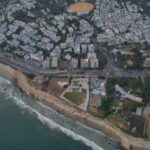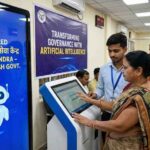Lucknow, 2025 — Uttar Pradesh (UP) is undergoing a significant economic transformation, driven by ambitious policies, strategic investments, and a renewed focus on diversification and sustainability. These changes are raising important questions about whether UP is crafting a new economic model that could redefine its future and set a precedent for other regions. This article explores the dimensions of UP’s evolving economic landscape and assesses the sustainability and scalability of its new economic model.
Key Components of UP’s Emerging Economic Model
- Diversification of the Economy
- Strategy: Moving beyond traditional agriculture and small-scale industries to embrace sectors like information technology, biotechnology, and renewable energy.
- Impact: This shift aims to create a more resilient economy less susceptible to sector-specific shocks and capable of providing a broader range of employment opportunities.
- Infrastructure Development
- Initiatives: Massive investment in both physical and digital infrastructure, including new highways, airports, and expanding internet connectivity.
- Purpose: To enhance the state’s logistical capabilities, attract more business investments, and improve the overall quality of life for its citizens.
- Focus on Education and Skill Development
- Approach: Reforming the educational system to better align with industry needs, including enhancing vocational training and higher education focusing on modern technologies.
- Goal: To prepare a workforce that is equipped to handle new and emerging industries, supporting the state’s economic diversification efforts.
- Enhancing Governance and Reducing Bureaucracy
- Measures: Implementing reforms to streamline governmental processes, reduce corruption, and make the state more business-friendly.
- Result: These reforms are intended to improve the ease of doing business in UP, attracting both domestic and international investors.
Challenges to the New Economic Model
- Socio-Economic Disparities: Despite rapid growth, UP must address significant disparities between urban and rural areas, and among different social groups, to ensure inclusive growth.
- Sustainability Concerns: Balancing rapid industrial growth with environmental sustainability remains a challenge, requiring policies that prioritize green technologies and practices.
- Implementation Gaps: Translating policy into effective action remains a hurdle, with potential delays and inconsistencies in executing large-scale projects.
Evaluating the Sustainability of UP’s Economic Model
- Economic Inclusivity: Ensuring that growth benefits are widely distributed across various segments of society, reducing inequality and fostering social stability.
- Environmental Impact: Integrating sustainable practices into new industries to minimize environmental impact while promoting long-term economic viability.
- Scalability: Assessing whether the economic strategies being implemented in UP can be scaled to other regions, considering different socio-economic contexts.
Looking Forward: A Paradigm Shift?
As UP continues to develop and implement its ambitious economic strategies, it is becoming clear that the state is not just adapting to new economic realities but potentially pioneering a model that could be replicated in other developing regions. This model, characterized by economic diversification, significant investment in infrastructure, emphasis on education, and streamlined governance, offers a blueprint for holistic development.
Conclusion: UP’s efforts to redefine its economic landscape could indeed signify the birth of a new economic model. The success of this model will ultimately depend on its ability to address current challenges and adapt to future economic shifts, making it a critical case study for other states and regions aiming for comprehensive economic transformation.













